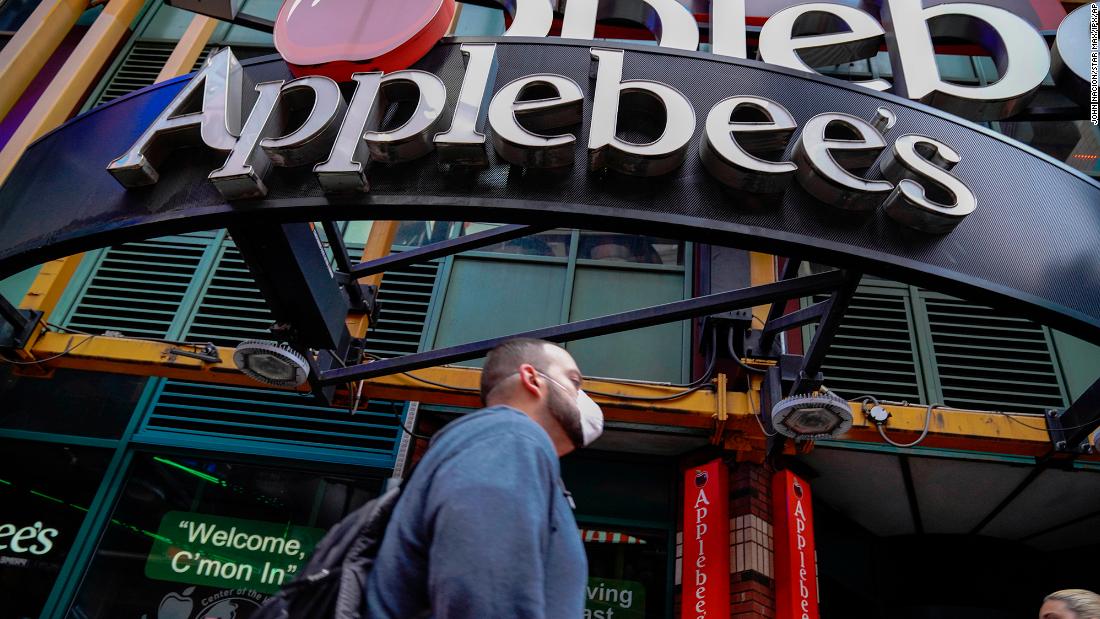
It wants to outsource those orders to call centers, where a person or automated system will take your orders and also try to upsell you a little.
More than half of Applebee’s roughly 1,575 US locations already use call centers for phone orders, according to the company. By the end of the year, Applebee’s wants most of its restaurants to get on board.
“I’d like to get, in an ideal world, almost all of those [restaurants] to utilize the call center,” Applebee’s president John Cywinski told CNN Business in a recent interview. Of course, that doesn’t mean that you can’t call your local Applebee’s if you have questions about, say, how busy the location is. In those cases, someone in the restaurant will be around to pick up.
Phone orders on the rise
Onosys, a software company that helps restaurant chains set up digital ordering systems, is getting far more inquiries into call centers than it used to.
Last year, only about 5% of new clients were interested in the service, said Ryan Younker, Onosys’ chief technology officer. But in the past six to 12 months, “at least 25% of our incoming … questions are either solely for a call center or for online ordering and call center,” he said.
A few things are driving restaurants to consider outsourcing their phone orders.
In the past year, about 8% of restaurant consumers surveyed by restaurant consulting firm Technomic said they’ve placed an order by phone — double those who said they’d done so prior to the pandemic.
“Telephone’s still a relatively common way for consumers to order, especially for takeout and especially if they want to work directly with the restaurant,” said David Henkes, senior principal at Technomic.
Applebee’s is not trying to solve an immediate crisis. Staffing has reached pre-pandemic levels, according to the brand. And Applebee’s started working with external call centers over three years ago, even before the pandemic hit.
But call centers allow “our team members to really focus on dine-in execution and restaurant-level execution,” Cywinski said. “I’m always a little apprehensive about team members doing a dinner rush … having to stop what they’re doing in-restaurant to pick up a phone to take an order.”
Outsourcing calls “improves our efficiency and improves the guest experience,” he said. “It’s well worth it, if you think about the opportunity cost of a dropped call or a busy team member putting a guest on hold.”
Ideally, from the brand’s perspective, customers shouldn’t even realize that they’re not talking to an Applebee’s employee.
Or if they do, it’s only because the experience is better.
Thank you for calling Applebee’s
So what does it feel like to call an Applebee’s and reach a call center?
On Thursday afternoon, Applebee’s executive director of communications Melissa Hariri called an Applebee’s location with a call center to show me how it works. I stayed on the line, muted, while she placed her order, first with an automated system and then with a person.
Hariri called the restaurant and hit the number two to place her order using automation. After she stated each item, a robotic, female voice repeated it, asking what else she would like.
At “kid’s hamburger,” however, the smooth process hit a snag. “I’m sorry. I wasn’t able to add a kid’s burger because it’s not an option at this location. If you need to, you can always ask to be connected to a representative for more help,” the machine said. Hariri continued with her order.
Right after hanging up, Hariri called back, this time requesting to speak with an agent. He was calm and courteous. There was no background noise, and Hariri was never placed on hold.
Hariri ran through her list again. When she got to the kid’s hamburger, the agent asked if she wanted it with or without cheese. She specified — no cheese — and he continued. After a few more items, Hariri asked the agent if the kid’s burger was available at the restaurant. He affirmed that it was.
Later, Hariri looked into the kids burger discrepancy, and learned that the restaurant really didn’t have a kids hamburger on the menu. But it did have a kid’s cheeseburger.
The agent knew that a cheeseburger without the cheese is a hamburger. The machine, apparently, did not. “Our team is looking to improve this on the automated side,” Hariri said.
So it still pays to talk to a person, sometimes.

